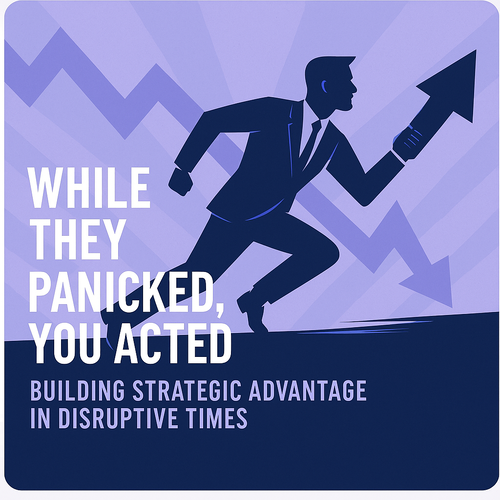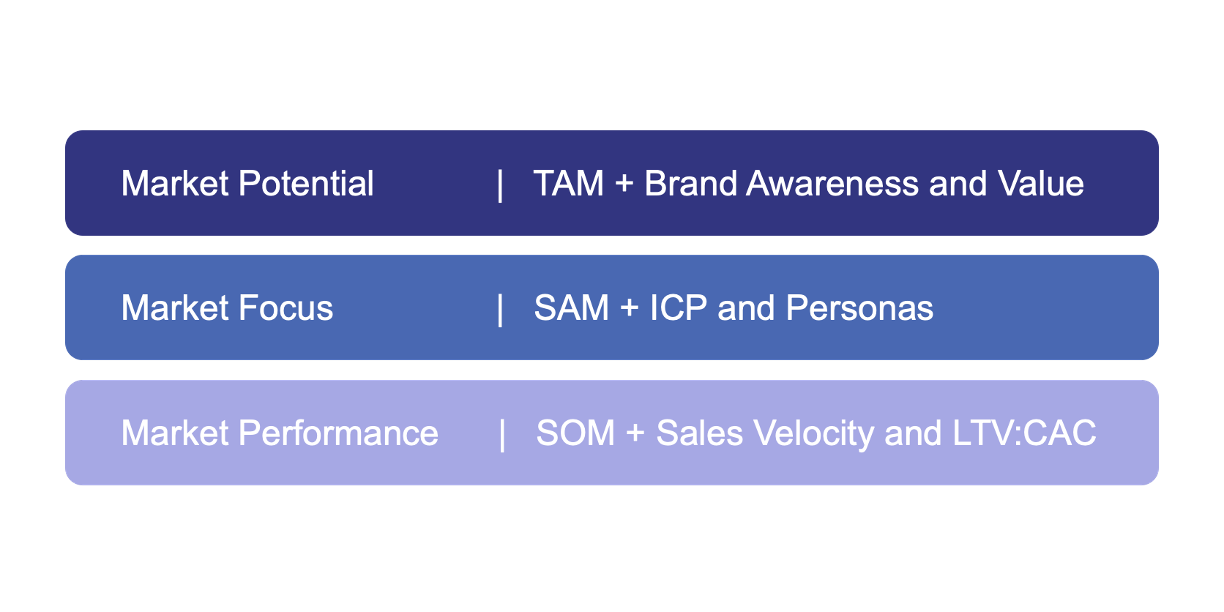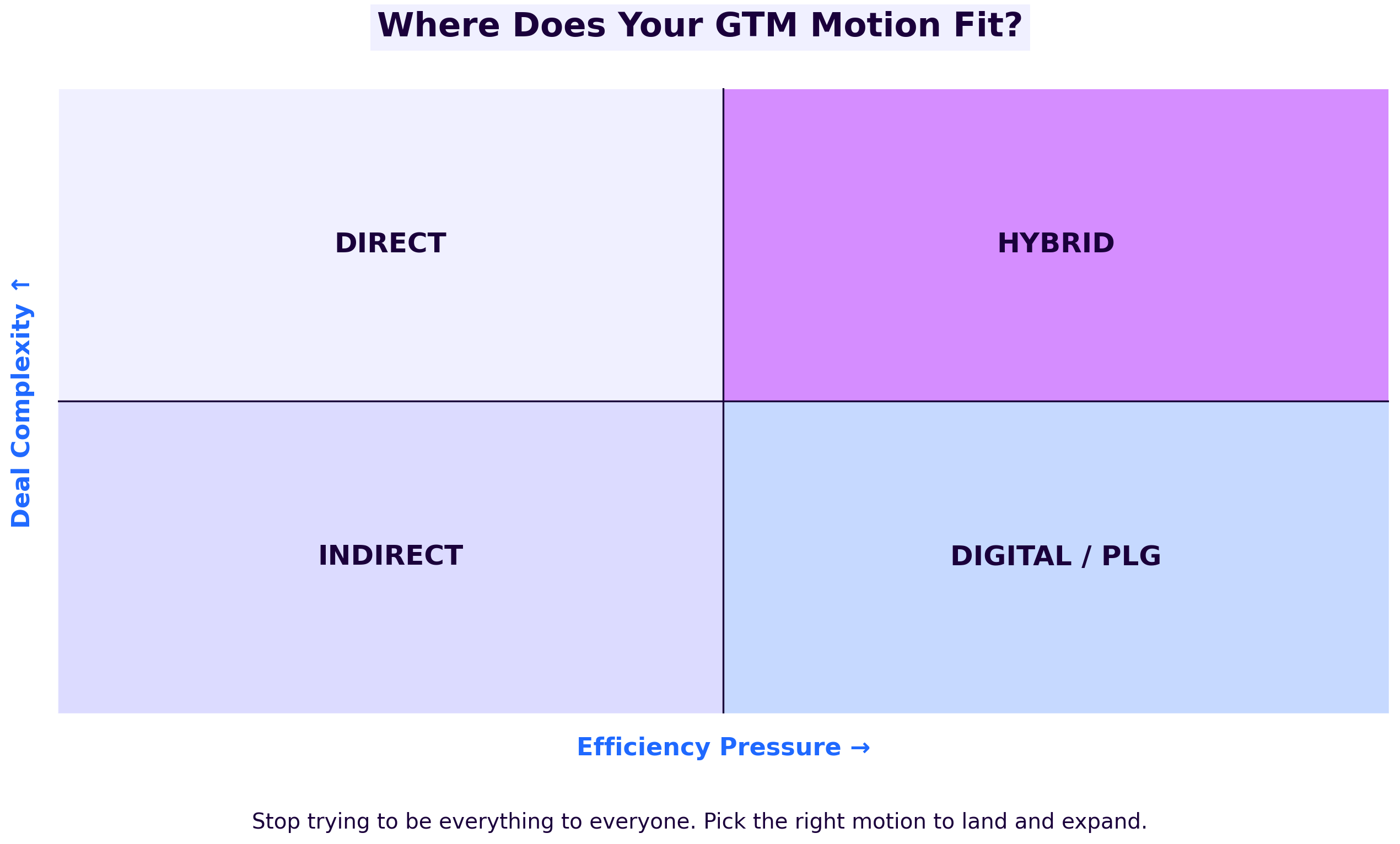TAM to Revenue
A Practical Framework that Turns Potential into Performance How to align sales, marketing, and finance—before the next “why are we behind plan?”...

While They Panicked, You Acted: Strategic Marketing for Small Business Growth in Disruptive Times
When markets shift, most companies freeze. Or flail. Or retreat into the warm comfort of "wait and see." Whether it’s economic uncertainty, new tariffs, or sudden regulatory swings, disruption shows up fast—and rarely on your schedule.
But a select few do something else entirely: they seize the moment. They recognize that disruption isn’t just a threat—it’s a growth lever hiding in plain sight—especially for small businesses looking to accelerate growth with the right marketing strategy.
The Opportunity Radar: Where Disruption Comes From
Before you act, you need to know where to look. Disruption doesn't always arrive on a flaming meteor. Sometimes it's a slow tectonic shift. Sometimes it's a glitch in your competitor's matrix.
Here are six common market forces that can create strategic openings:
Some of these market forces are obvious. When they hit, you can separate yourself by acting while others stall out. But the more subtle ones? That’s where real advantage lives.
If it’s obvious, you’re in a race. But if you can detect and act on subtle shifts before others even notice, you separate yourself not just by speed—but by insight. You get in position before the wave crests—and ride it while others scramble to catch up.
And make sure to watch the cash. While not a market force themselves, capital markets often respond to these shifts—sometimes with surprising speed. If investors sense a wave coming, capital can flood in fast, creating windows to raise funds, accelerate growth, or outspend competitors. The inverse is also true: when sentiment turns, access dries up. That’s why readiness matters. You won’t have time to prepare once the money moves.
Snapshot Strategy: Who Got It Right (or Didn’t)
These real-world examples show how different companies—big and small—responded to disruption with bold strategic decisions. If you're a small business leader thinking about your next move, these are the kinds of small business growth strategies that separate the reactive from the ready.
|
Company |
Market Force |
Strategic Move |
Outcome |
|
Microsoft |
Technology Shift |
Pivoted from boxed software to cloud |
Cloud business exceeds $100B |
|
Peloton |
Socio-Economic |
Scaled rapidly to meet pandemic demand |
Stock soared (then collapsed) |
|
Tesla |
Socio-Economic, Regulatory |
Focused on EVs ahead of incumbents |
Category-defining growth |
|
Costco |
Socio-Economic, Competitive |
Maintained pricing during inflation |
Growth and market dominance |
|
BlackBerry |
Competitive |
Dismissed touchscreens as a niche |
Lost market share to Apple and others |
Tesla moved early on the convergence of tech innovation and shifting buyer sentiment to define the EV category. Costco stayed the course during inflation, reinforcing trust through consistency while competitors wavered. BlackBerry, on the other hand, clung to its past, dismissing touchscreens and ignoring clear shifts in user behavior—ultimately getting left behind.
One of the most underutilized triggers? A competitor sunsetting a product. When a solution disappears from the market, its customers still have the same problem—and now they have budget and urgency. That’s not just an opportunity. That’s an invitation. If you’ve been quietly preparing, it’s time to make your move.
From Insight to Action: Why SWOT Alone Isn't Enough
By now, you’ve probably identified one or two market forces playing out in your space. Maybe a competitor just blinked. Maybe demand is shifting. Maybe your buyers are asking different questions than they were six months ago. You see it. You feel it. But recognizing the shift isn’t enough. You have to turn that insight into motion.
Most companies try to bridge that gap with a SWOT analysis. It looks smart. It feels strategic. It earns a slide in the board deck. But too often, it ends up as a static list—then gets filed away and forgotten. That’s where things go sideways.

A SWOT only becomes valuable when it’s activated—when it leads to decisions, ownership, and movement. And that only works if your go-to-market foundation is in place. You can’t capitalize on opportunity if your CRM is a mess, your messaging is vague, or your campaigns aren’t landing. That’s why in Outcome Marketing, we always start with Setup → Execute → Scale. Skip setup? You won’t execute well. Can’t execute? You’ll burn cycles chasing opportunity without outcomes.
The solution: treat SWOT as a transitional tool. Use it to move from observation to operation—with structure, clarity, and action.
SWOT Analysis Example for Small Business: From Static to Activated
Here's a practical SWOT analysis example for small business leaders who want to move from observation to action:
|
SWOT |
Activation Prompt |
|
Strengths |
What can we double down on right now? |
|
Weaknesses |
What must we shore up to move fast and win trust? |
|
Opportunities |
What external force can we ride right now? |
|
Threats |
What should we disrupt ourselves on before someone else does? |
Now you’re not just observing. You’re maneuvering.
To run this exercise well, assemble your cross-functional leadership team—marketing, sales, product, operations. Start with a traditional SWOT to ground the conversation. Then move line by line and apply the activation prompts. Be honest. Be specific. Be ruthless about what’s real versus what’s aspirational.
For each prompt, identify one or two focused actions or strategic moves. These might include repositioning your core offering to meet an emerging buyer need, reallocating resources to a segment gaining momentum, or launching a campaign that turns a short-term market shift into long-term pipeline. What matters is linking each insight to a clear decision—and making sure it drives real customer and business outcomes. Then assign ownership. Without accountability, even the sharpest insights are just strategy theater.
Finally, make sure your activated SWOT feeds into your operating rhythm. Fold those actions into your existing OKRs, Rocks, or quarterly planning. Strategy only works if it survives first contact with the calendar.
The Twist: Use Events to Spark Internal Action
Up to now, we’ve talked about how external events can create growth opportunities. But here’s the deeper play: you can use events internally to catalyze change. Sometimes your team doesn’t need another dashboard—they need a spark. A reason to rally. That’s where strategic events come in: a quarterly planning session, an offsite, a product launch, a board mandate. Used intentionally, these become more than meetings—they become forcing functions. They create urgency. Permission. Focus.
They give you the narrative moment to say: “This changes things.” The best companies don’t just react to market forces. They use events—both internal and external—as levers to activate strategy, galvanize teams, and build momentum when it matters most.
What Now?
If you're seeing signals in your market, assess them now, and determine if you should act.
Don’t wait for the panic to pass. It’s too late. Be the one who acted while others froze

A Practical Framework that Turns Potential into Performance How to align sales, marketing, and finance—before the next “why are we behind plan?”...

What Is a Go-To-Market Strategy? A go-to-market (GTM) strategy is a structured approach for launching a product or service with maximum market...

Most companies are pretty good at figuring out their bets. They know the what (products) and the who (markets). That’s the easy part.